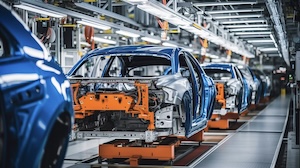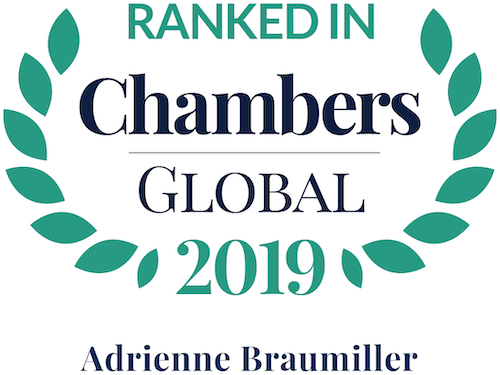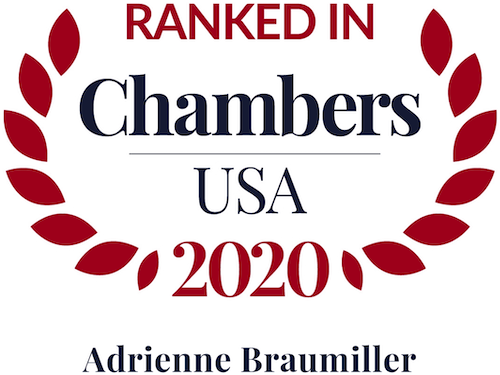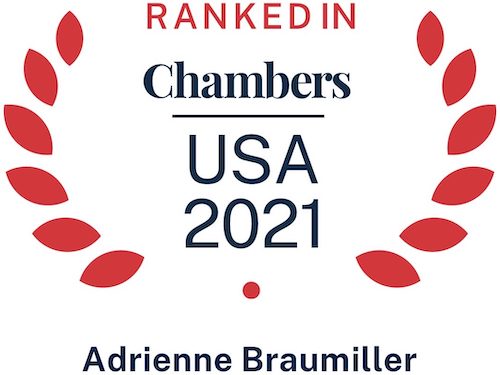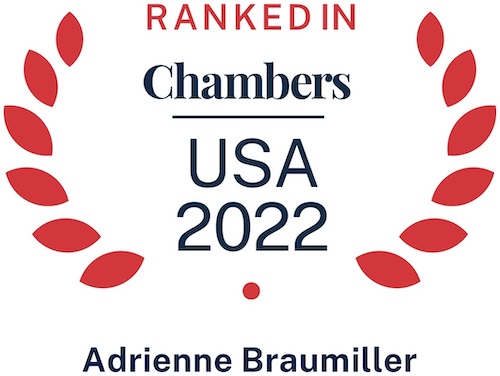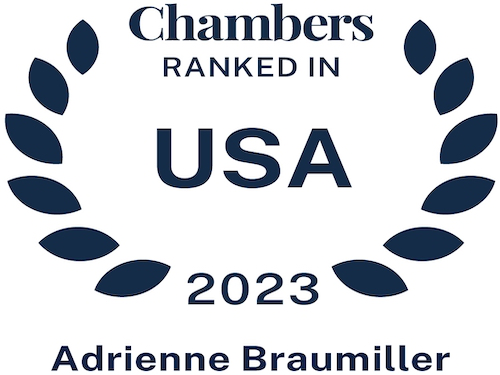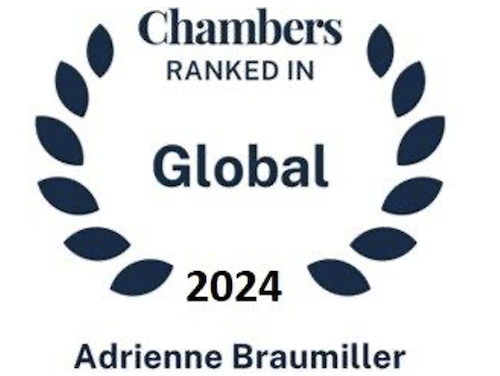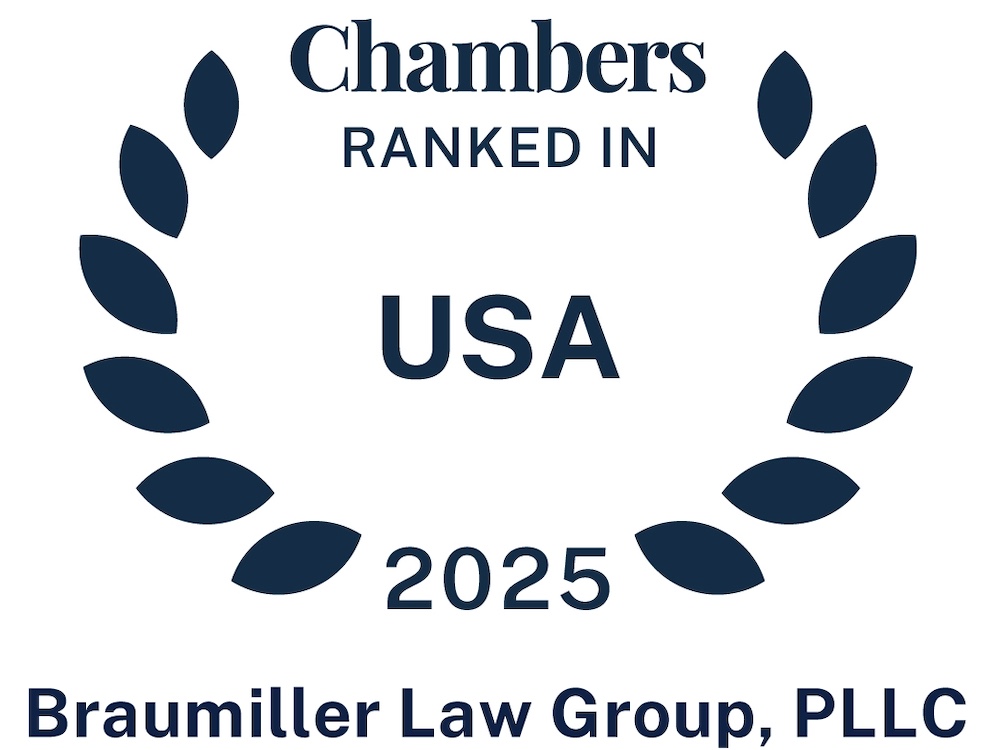The Automotive Industry, China’s Semi Grip on Supply Chains, and General Motors 2027 Exit Strategy for Suppliers (Is a clean break even possible?)
By Bob Brewer, Braumiller Law Group
General Motors (GM) has instructed thousands of its suppliers to phase out sourcing parts and materials from China by 2027. The exit strategy began in early 2024, with the directive gaining momentum in spring of this year, 2025. This directive is part of GM’s broader strategy to enhance supply chain resiliency and reduce exposure to geopolitical risks, particularly amid escalating, or let’s just say, continuously fluctuating, U.S.–China trade tensions. The company is encouraging suppliers to find alternative sources, preferably within North America, though it remains open to non-Chinese international suppliers that meet regulatory and logistical standards. The move is driven by concerns over volatile tariffs and trade restrictions, rare-earth mineral export controls from China, and of course, semiconductor shortages and other supply chain disruptions. GM executives, including CEO Mary Barra and global purchasing chief Shilpan Amin, emphasized that resiliency and control now outweigh cost savings in sourcing decisions.
First, we must observe a little bit of history, as this task of sourcing departure from China quite frankly may be much easier said than done. Afterall, we are talking about decades of supply chain integration. General Motors (GM) first entered China’s automotive manufacturing sector in the late 1990s, with a major milestone being the formation of its joint venture with SAIC Motor in 1997. GM partnered with SAIC Motor Corporation to form Shanghai GM, which was a 50-50 joint venture. This marked GM’s formal entry into vehicle and parts manufacturing in China. The venture began producing Buick sedans and later expanded to include Chevrolet and Cadillac models. In the late 1990s–2000s there was enhanced supply chain integration in the making as GM began localizing parts production to support its growing vehicle assembly operations. This included engine and transmission plants, as well as component manufacturing for electronics, interiors, and chassis systems. In 2004 GM established a dedicated parts and services division in China, further embedding itself in the local supply ecosystem. It wasn’t that long ago, 2009–2010 , that GM significantly increased its global sourcing from China, leveraging cost advantages and the country’s growing manufacturing capabilities. Obviously, efficiency and lower labor and production costs made China attractive for parts manufacturing through the years. So, in retrospect, years of integration in the supply chain must now take a back seat to geopolitical pressure. According to the Trump administration, the recent meeting with Xi Jing Ping on a one to ten scale was a twelve. I get it, we need each other to a certain extent, but there is in fact a much bigger picture to consider as GM’s mandate is in line with most of those in the auto industry who are intent on creating a more localized supply chain and of course reduce dependence on China for parts. China is doing the same regarding the U.S. This mandate may be a bit of a challenge though when it comes to electric vehicle components, but worth a mention, GM has already invested in a Nevada lithium mine and partnered with U.S.-based rare-earth suppliers to secure domestic sources. However, domestic sources of rare earth minerals are somewhat rare when compared to the rest of the world. Who am I kidding, it’s China who owns 90% of the rare earth minerals.
It’s a fact, China dominates production of several critical components due to its scale, infrastructure, and control over raw materials. While not exclusive to China, rare earth-dependent components such as electric motors, especially those using neodymium magnets, rely on rare earth elements and China controls over 80% of global rare earth refining capacity. (You may choose to reference my previous article on the topic: https://www.braumillerlaw.com/rare-earth-minerals-and-chinas-global-dominance/) This makes China a near-monopoly supplier for traction motors in EVs, unless automakers source from alternative magnet chemistries or countries. Regarding battery materials and components, China leads in lithium-ion battery production, including cathodes and anodes, battery-grade lithium, cobalt, and graphite processing, and battery management systems (BMS). Even if cells are assembled elsewhere, many upstream materials still trace back to China being involved in the manufacturing process. Inclusive also are electronic control units (ECUs) and sensors. Imagine that, China produces a vast share of automotive semiconductors, camera modules, radar sensors, and infotainment systems. While Taiwan, South Korea, and Japan also play major roles, China’s low-cost assembly and PCB manufacturing remain essential. Honorable mention, interior and exterior trim items like instrument panels, seats, lighting assemblies, and dashboards are often sourced from Chinese Tier 1 and Tier 2 suppliers due to cost and scale advantages that are hard to beat.
Can other countries manufacture these parts? Sure, but with caveats. It is however technically feasible as most parts can be made elsewhere, including the U.S., Mexico, Germany, Japan, and South Korea. It is however essential in the supply chain that manufacturing locations consider cost and lead time. Shifting production often means higher costs, longer timelines, and the need to rebuild supplier networks, some of which may have been in place for years. In a normal manufacturing process, there is an entire ecosystem associated with day-to-day operations. So, what about strategic reshoring? Companies like GM and Tesla are investing in North American battery plants and rare earth processing to reduce dependence. (The rare earth mineral deal between the United States and Australia, signed on October 20, 2025, is a strategic $8.5 billion framework aimed at securing critical mineral and rare earth supply chains, reducing dependence on China.) These alternatives are hard to scale quickly with decades of investment in the mix. Many supply chains were built over 20–30 years in China creating the very integrated ecosystems I previously mentioned. The observation here in scope is that China offers raw materials, processing, and assembly in one region. This is of course an attractive package for logistics and subsequent trade flow. Even with tariffs, (that seem to change weekly) Chinese parts often remain cheaper than Western alternatives.
So, let’s explore the alternatives. Who is poised to replace China? Some countries are stepping up, like Vietnam, Mexico, and India who are gaining traction in wiring harnesses, basic electronics, and trim. South Korea and Japan are strong in high-end semiconductors and battery tech. The U.S. and Canada are investing in rare earth processing, lithium mining, and EV battery plants. Mexico is however the most versatile alternative for North American automakers with close, cost-effective, and fast scaling. South Korea and Japan offer high-tech reliability for batteries and semiconductors, and as mentioned, Australia and Canada are key for raw materials but need more refining infrastructure. (China leads by far in refining) India and Vietnam are slow emerging players, especially for labor-intensive components, as full replacement will take years, and billions in investment.
And this author at this juncture asks, what about the USMCA? What percentage is Asia in the making of an automobile in North America? From my research I was under the impression China has been reduced to about 9% of parts in the manufacturing of a North American automobile. This is part of the roughly 25% that comes from primarily Asia and other countries. (Germany gets an honorable mention but is less than 5%) As of recent USMCA compliance data, automotive parts production across the USMCA region breaks down approximately as follows: 40–45% in the United States, 35–40% in Mexico, and 15–20% in Canada. These percentages reflect the regional value content (RVC) sourcing patterns required under the United States–Mexico–Canada Agreement (USMCA), which mandates that 75% of a vehicle’s components must be made in North America to qualify for tariff-free trade. The United States 40–45% is loaded with strengths in high-value components like engines, transmissions, advanced electronics, and R&D-intensive systems. Labor Value Content (LVC) rules favor U.S. production due to higher wages, incentivizing automakers to shift more manufacturing north. EV investments have seen significant growth in battery and semiconductor plants under the Inflation Reduction Act and CHIPS Act. Mexico’s 35–40% stands with strengths in labor-intensive components such as wiring harnesses, interior trim, and basic electronics. Of course, lower wages and mature supplier networks make Mexico ideal for high-volume, low-margin parts. Of interest within the process, many vehicles are assembled in Mexico using parts from all three countries. Canada’s 15–20% is with strengths in specialized components like drivetrains, aluminum castings, and niche EV parts. Proximity to the U.S plays a major role for Mexico leading to a strong integration with U.S. suppliers, especially in Ontario–Michigan corridor. Regarding the global EV transition Canada is investing in battery minerals and gigafactories, but scale is still developing. In review, here are the specific USMCA Rules of Origin in order to qualify for duty-free treatment: 75% of core components (engines, transmissions, axles) must be North American made, 70% of steel and aluminum must be sourced from North America, and 40–45% of labor value must come from facilities paying at least $16/hour. These rules have reshaped sourcing strategies, pushing automakers to rebalance supply chains toward the U.S. and Canada while maintaining Mexico’s cost advantages. One must keep in mind, on average, a car part can cross the borders between the U.S., Mexico, and Canada up to four times during the manufacturing process.
Even with USMCA’s push for regional sourcing electronics and sensors are often too specialized or cost-prohibitive to source locally. Battery supply chains still rely heavily on Asian processing, especially China’s graphite and rare earths. Tooling and molds for trim and lighting often originate in Asia even if final assembly is done in North America. Of note, China accounts for an estimated 60–70% of global automotive tooling and molds production, making it the dominant supplier in the industry. Toyota, Honda, Hyundai source more from Asia due to corporate supply chains, while GM, Ford, and Stellantis are increasing North American sourcing, but still rely on Asian electronics and battery inputs.
So, it begs another question. Just who mainly is GM talking to regarding this massive move from China sourcing? Among the thousands of suppliers globally, its major suppliers include companies like Bosch, Magna International, Denso, Lear Corporation, ZF, Aptiv and Continental. These firms provide critical components ranging from electronics and powertrains to seating and safety systems. Strategic suppliers for EV transition are LG Energy Solution and Panasonic who are central to GM’s Ultium battery platform. Aptiv and Bosch are key for advanced driver-assistance systems (ADAS) and infotainment. Denso and ZF support GM’s hybrid and ICE powertrain systems. Although there is a huge global supply chain footprint, suppliers, like Magna and Lear, are more North America-centric and better aligned with USMCA compliance. Of special consideration, General Motors accounts for a small portion of Bosch’s overall business, estimated to be well under 5% of its global revenue. Worth noting, Bosch is the world’s largest automotive supplier, with a highly diversified customer base across dozens of automakers. For an example of a deliberation on who should ask “how high” when GM says “jump” here’s how GM actually fits into Bosch’s broader business model regarding automotive revenue streams. Mobility Solutions is Bosch’s largest business segment, generating over $52 billion in 2024, about 60% of the total company revenue. Bosch supplies components to virtually every major automaker, including VW Group, Toyota, Stellantis, BMW, Mercedes-Benz, Hyundai, and GM. While GM is a significant customer, especially in North America, it is not dominant, so there is a consideration of cost in moving the sourcing. Analysts estimate GM contributes 2–4% of Bosch’s total revenue, depending on the year and model mix. This translates to roughly $1–2 billion annually, mostly from, ECUs, sensors, fuel injection systems, ADAS modules, infotainment and connectivity components. Bosch’s diversification strategy deliberately avoids overreliance on any single OEM. It operates in over 60 countries and supplies parts for ICE, hybrid, and EV platforms. The company is expanding into software, hydrogen electrolysis, and smart infrastructure, further diluting dependence on traditional automakers. To say the least, it’s a very good strategy in the currently very volatile global business climate marked by geopolitical tensions, trade disruptions, and economic uncertainty.
Overall, if you take a look at the comparative breakdown of how much General Motors contributes to the revenue of its major suppliers, GM typically accounts for less than 5% of each major supplier’s global revenue, with Magna having the highest exposure among top Tier 1s. Actually, Magna and Lear are the most exposed to GM’s sourcing decisions, especially under USMCA and China-exit pressures. Denso and ZF are more diversified, with stronger ties to Japanese and European automakers. As mentioned, Bosch’s exposure is diluted across dozens of OEMs, making GM a small but strategic client. On the other hand, General Motors accounts for an estimated 6–8% of Magna International’s total revenue, making GM one of Magna’s largest customers. This is the highest exposure among GM’s top Tier 1 suppliers. Total revenue for (2024–2025) is approximately $42.8 billion USD, with an estimated GM contribution of between $2.5 billion and $3.4 billion USD. Magna’s business with GM spans multiple categories including body structures, chassis systems, seating systems, powertrain components, mirror and lighting systems, ADAS and electronics. As Magna’s exposure is the highest, it’s a bellwether for GM’s sourcing shifts. Magna has a strong North American footprint, with dozens of plants in the U.S., Canada, and Mexico therefore GM’s push for USMCA compliance and China-exit strategy aligns well with Magna’s regional capabilities. Magna also supports GM’s EV transition, supplying components for Ultium-based platforms. Honorable mentions at less than 5%, strategic EV and electronics suppliers like LG Energy Solutions and Panasonic who are critical for GM’s Ultium battery platform. Bosch and Aptiv supply advanced driver-assistance systems (ADAS) and infotainment modules and Denso and ZF provide high-performance engines and transmission components.
So what about GM’s China exit strategy by 2027, with primarily a less than 5% impact in revenue with many of its major suppliers? Add to this the relocation of production of critical components (especially electronics and batteries) to North America which could cost in the billions. Not to mention, but I will, sourcing raw materials like lithium and rare earths from U.S., Canada, or Australia, and the need to comply with USMCA and the Inflation Reduction Act rules to qualify for tax credits and tariff exemptions. It’s quite an undertaking, and with the timeline currently in place, my bet is with China being the super sticky gum on GM’s shoe. Decoupling is a tough nut to crack after decades of collaboration, integration, determination, and of course, China being the sourcing capital of the world, and often the only option. Keep in mind this fun fact, the average GM car, like most modern vehicles, is made up of around 30,000 parts when counting every nut, bolt, clip, and electronic chip.
One final note: Reuters recently reported that Tesla is also now actively directing its suppliers to exclude China-made components from vehicles built in the United States, a significant strategic pivot that places it with GM in a broad industry exodus from Chinese sourcing. According to people familiar with the situation, Tesla aims to complete this transition within the next one to two years. BTW, it’s interesting that Ford has yet to make an official move.

